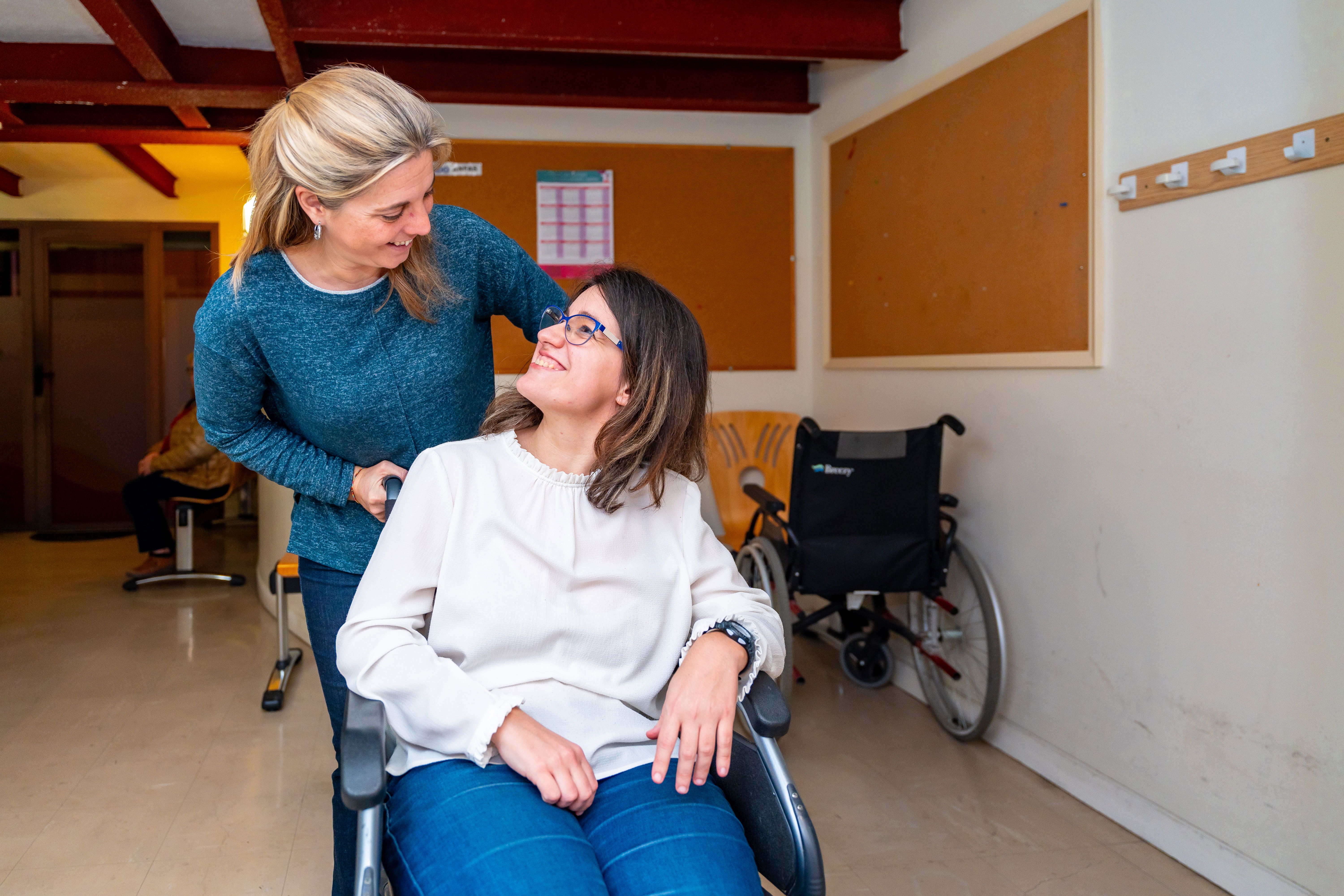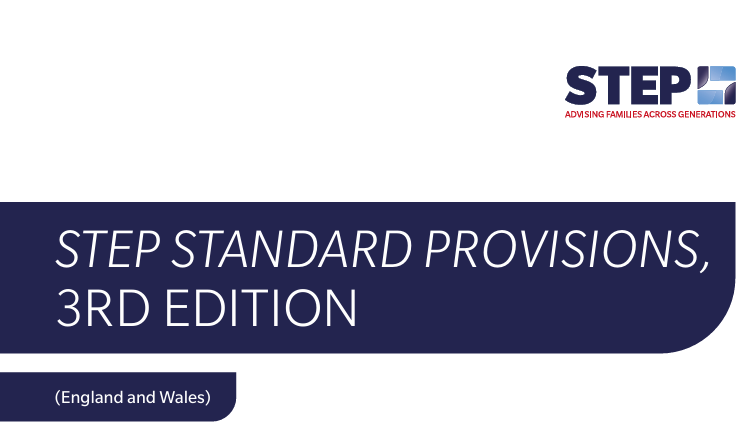Disabled/ Vulnerable Persons Trust (VPT)
Scenario: A couple writing their wills, and their son is vulnerable. The vulnerability isn’t what’s important here, only that they have care needs, and the parents are not sure how to ensure the protection of their dependent child, when they pass away. Sadly, the couple were unaware of Vulnerable Persons Trusts and left their Estate (their worldly possessions) to charities as they knew that their child was incapable/self-destructive with finances due to a mental capacity issue. This left the individual with nothing and they were left to the care system. They didn’t want to do this; they felt awful for doing so, but they didn’t know that there was a solution that could have cared for their child after they passed.

This is where Disabled/Vulnerable Person Trusts (VPTs) come in to save the day and ensure that those we leave behind who are unable to care for themselves are cared for by the finances in our estate. VPTs act much as a Discretionary Trust (DT) does (see DT article), where you can appoint between two and four trustees (the ones in charge of administering the Trust) with finances being held by the Trustees (which could be family members, carers, etc.) that could use the money to fund care for the person in question.
Where a client wants to provide for a beneficiary who is Vulnerable/ disabled, they may wish to leave assets in a vulnerable/ disabled person’s trust. This could be because they do not think the beneficiary will be able to manage a large sum of money, depending on the type of disability the beneficiary has. So, instead of the need to appoint a deputy to manage the financial affairs, which is likely to be a lengthy and costly process and incurs ongoing costs, the assets can go into the trust, where trustees will manage them. This is the most beneficial and cost-effective combination if supported by a Lasting Power Of Attorney.
As a vulnerable/ disabled person’s trust is discretionary, there must be more than one beneficiary. However, you can select the disabled beneficiary as the primary beneficiary alongside other beneficiaries.
Another benefit of leaving assets in this type of trust is that the primary beneficiary’s means-tested benefits will remain unaffected. If a primary beneficiary receives a large inheritance outright, the Local Authority will reassess any benefits they are currently receiving and review these, which will likely be to the detriment of the primary beneficiary. If the vulnerable or disabled person holds assets exceeding a certain threshold (which can vary), the Local Authority may determine that they can now financially support themselves and subsequently reduce or remove the benefits they receive.
Placing the funds in a disabled person’s trust also means the Trustees can manage the trust fund so the primary beneficiary continues to receive those benefits.

How they work
Care doesn’t strictly have to come in the form of cash; this advice also goes for the trustees managing the funds for the primary beneficiary (the vulnerable person benefiting from the VPT). Everybody is different and has their way of going about their life; this is no different for vulnerable beneficiaries; it is merely a matter of ability and adjusting to suit their needs. Say there is an individual who does not have a concept of money; they cannot recognise its value, but they are still capable of shopping and feeding themselves. A VPT could dispense value to the beneficiary in the form of supermarket vouchers as an example, as these can often have the benefit of being limited to what can be purchased with said vouchers or by paying for services. The money is managed by a Trustee, who uses their best judgement to assess the best way for the funds to provide a benefit for the beneficiary; there is an amazing deal of flexibility in these trusts while staying very strict to ensure the vulnerable beneficiary is protected.

The disabled beneficiary is treated as the primary beneficiary of the trust. This means that while they are alive, the Trustees are required to apply any income and capital in the trust to benefit the primary beneficiary as they see fit. This is in contrast to a basic discretionary trust, where a primary beneficiary cannot be defined, although a non-binding letter of wishes can request that someone be treated as the main beneficiary. Due to the nature of discretionary Trusts there must always be more than one potential beneficiary.
As this trust is discretionary, the trustees have complete discretion over the trust funds. They are not obligated to distribute anything to the primary or surplus beneficiaries. However, anything distributed by the trustees must be for the benefit of the primary beneficiary. The testator should write a letter of wishes accompanying the Will, which guides the trustees in how they would like the assets to be distributed. It is important to note that a letter of wishes is not legally binding; therefore, there is no obligation placed on the trustees to follow them.
Who is a Vulnerable Person?
So, how do we qualify someone as a “vulnerable person” when assessing whether they qualify for a trust as crucial as this? Legislation has made it flexible enough to encompass those who need it while ensuring it is specific enough not to be abused. A vulnerable person whom this trust would be set up for will need to meet one of the requirements set out in (Section 89(4A), Inheritance Tax Act 1984 and Section 38 and Schedule 1A, Finance Act 2005 (FA 2005). We need to consider whether the individual fits any of the below categories:
- a person who, by reason of mental disorder within the meaning of the Mental Health Act 1983, is incapable of administering his or her property or managing his or her affairs,
- a person in receipt of attendance allowance,
- a person in receipt of a disability living allowance by virtue of entitlement to—the care component at the highest or middle rate or the mobility component at a higher rate,
(ca) a person in receipt of disability assistance for children and young people by virtue of entitlement to—
- the care component at the highest or middle rate in accordance with regulations made under section 31 of the SS(S)A 2018 or
- the mobility component at a higher rate in accordance with regulations made under section 31 of the SS(S)A 2018,]
- a person in receipt of personal independence payment F4…,
- a person in receipt of an increased disablement pension,
- a person in receipt of constant attendance allowance or
- a person in receipt of armed forces' independence payment.
Furthermore, there are provisions to ensure that if a person would qualify for one of the above but are not in receipt of such due to residing in a hospital or care home, they would still qualify as a disabled person.
Disability Living Allowance is being phased out and replaced with the Personal Independence Payment, likely the main reason for qualification going forward.
While the list above is not exhaustive, it gives a broad understanding of who can generally qualify for this type of Trust. If you are curious to read more about who can qualify, please feel free to check out the full Schedule here.

Trustees can, at their discretion, apply income and capital to any of the trust's other beneficiaries, but this must be no more than £3,000 or 3% of the trust's capital (whichever is lower in value) per annum.
Where the client has more than one disabled child, a trust must be created for each child. On the death of the primary beneficiary, the trust will continue as a basic discretionary trust only unless the trust itself is dissolved, in which case the assets in the trust will be distributed to the default beneficiaries.
After the disabled persons death the trust may carry on an ordinary discretionary trust, in which case the usual taxation rules will apply in regard to the relevant property regime, or the remaining property can be left to other beneficiaries absolutely. The second option is quite common where the only reason for the trust was protection of the disabled person and there is no further need to retain assets on trust beyond their death.

Benefits of Disabled/ Vulnerable Persons Trust (VPT)
VPTs provide not only the flexibility of a discretionary trust when controlling the flow of the benefits but also allow protection not afforded by a regular discretionary trust as other beneficiaries are limited to their entitlement. Anyone classified as a beneficiary under this trust but not the primary beneficiary would be limited to receiving 3% of the trust/ £3000 (whichever is lower) per tax year between them; usually, this would be siblings of the vulnerable person or descendants. This ensures that the primary beneficiary receives the bulk of the trust, giving it a distinct advantage over other types of trusts where a testator may be worried about their money not going where they would like it to go after their death, as seen in regular DTs. Following this, a VPT also provides more favourable tax benefits by not increasing tax liability when gifting money out of the trust. DTs charge up to 6% per exit and a periodic charge of 6% every ten years for a value over £325,000 (this first £325k of their whole estate is tax-free). While I appreciate that many people do not have £325,000 to put into a trust, this is not a financial requirement. The special inheritance tax treatment of this trust is simply an additional benefit. One thing extra to consider is whether the principal beneficiary of the trust is a “lineal” descendant of the testator, as this would allow for further protection from IHT for the testator via utilisation of their Residential Nil Rate Band (RNRB).

Disadvantages?
Clients often feel that the Disabled Discretionary Trust is too restrictive in how much the discretionary beneficiaries can receive from the Trust. This can be mitigated however by gifting assets to the discretionary beneficiaries outright in the Will. For example, in a case where a Testator has three children, one of which is disabled, 1/3 of the Residuary Estate should pass into the trust, with the remaining 2/3 passing to the other two children.
Who Should Act as a Trustee?
Whilst professionals would be the most capable for administering the Trust, this must be balanced against the fact that persons close to the disabled beneficiary, such as their siblings, would likely know their specific needs better than a professional and would be located closer to the beneficiary to administer the trust as and when the disabled beneficiary requires.
TAXATION

Although discretionary in nature, trusts satisfying the requirements of s89 receive favourable tax treatment.
Inheritance Tax
Inheritance tax is paid in the usual way on the testator’s death if their estate exceeds available nil rate bands. The value of the property that passes to the trust is treated as the commencement value of the trust.
As Disabled Person’s trusts qualify for special tax treatment and the disabled person has a ‘deemed interest in possession’ the RNRB is available if a qualifying residential interest is left to this type of trust as long as the disabled person is a direct descendant of the deceased.
During the life of the disabled person the trust is not subject to IHT anniversary and exit charges, provided the trustees stay within their annual limit if distributing to other beneficiaries.
On the death of the disabled person the trust fund is revalued and the value of the trust fund is aggregated with their free estate for IHT purposes.
Income Tax and Capital Gains Tax
The trustees and disabled person can make a ‘vulnerable person election’ to apply for special income tax and CGT treatment. They must do this by completing a vulnerable person election form (VPE1). This will then allow the trustees to decide each year if they wish to apply the special tax treatment. The election must be made no later than 12 months after 31 January following the tax year when it is to start.
Where the special tax treatment is applied the trustees must work out the tax as follows:
Income tax:
the trustees calculate their income tax liability on the normal basis as though there was no claim for special treatment
they then calculate the income tax the vulnerable beneficiary would have had to pay if the trust income had been paid directly to them as an individual
the trustees then claim the difference between these two figures as a deduction from their own income tax liability
Capital Gains Tax:
the trustees calculate the CGT as if there was no claim for special treatment
the trustees then calculate the CGT as if the gains arose directly to the vulnerable beneficiary
the trustees then claim the difference between these two figures as a deduction from their own CGT liability.
STEP Provisions to be aware of. (Technical Skip if required)

Suppose the trust has a disabled beneficiary at the time it takes effect; will a trust incorporating the STEP Standard Provisions meet the requirements of s89 Inheritance Tax Act 1984 (disabled trusts)?
This topic is discussed in Drafting Trust and Will Trusts: A Modern Approach, 10th Edition, chapter 27. The issue has been highlighted in the decision of the England and Wales Court of Appeal (the Court) in Re Poppleston, Barclays Bank Trust Company v HMRC,2 where the Court interpreted a will for the benefit of a disabled son loosely and purposively, so as to meet the requirements of s.89; the Court relied in part on a clause similar to Provision 3 of SSP2 or SSP3. Wherever there is a beneficiary who is disabled, within the meaning of the Inheritance Tax Act 1984 (IHTA), the drafter should consider specifically whether it is desired to draft the will so as to meet the conditions of s.89 IHTA (and s.89A) or not to do so, and draft the will accordingly.
Suppose the trust has a disabled beneficiary at the time it takes effect. Is there any conflict between the Standard Provisions and the s89 Inheritance Tax Act 1984 (disabled trusts)?
The answer is complicated. There can be a conflict. This possibility is noted in Drafting Trusts and Will Trusts: A Modern Approach.1 The issue has been highlighted (though without specific reference to SSP2) in the decision of the Court of Appeal in Re Poppleston, Barclays Bank Trust Company v HMRC2 Civ 810, where the court had to decide the true interpretation of a will written for the benefit of a disabled son. There appeared to be a wide discretion, but the will included a clause somewhat similar to SSP2 provision 3 or SSP3 provision 3. The court interpreted the will for the benefit of the disabled son loosely and purposively to meet the requirements of s89. Although the reasoning of the UK Court of Appeal may seem somewhat strained in favour of the presumed wish of the testatrix to delay the burden of inheritance tax (IHT) on the fund, the decision shows that it is for the drafter in each case to consider whether each of SSP3 is needed. It is possible to incorporate the Standard Provisions but to exclude any of them that are not needed in a particular case. It is for the users of SSP3 to decide, on a case-by-case basis, which provisions are appropriate and to adapt SSP3 accordingly
Conclusion
So, considering the very brief explanation above, do you see how the couple from the beginning of this article would have been able to take care of their son? Using a VPT, they could have left him everything with someone they trust to manage his inheritance to best suit his needs! If you feel this would be useful for your family or a friend who doesn’t quite know what to do about leaving a legacy for their vulnerable family, please ask them to reach out to us to help them plan for this!
Please note that this article does not cover the finer details of these Trusts; otherwise, it would be a technical paper and not easy for the Layperson to understand. Thanks to contributions from Manisha Chauhan and Alexander Brown of the Society of Will Writers Technical team.


